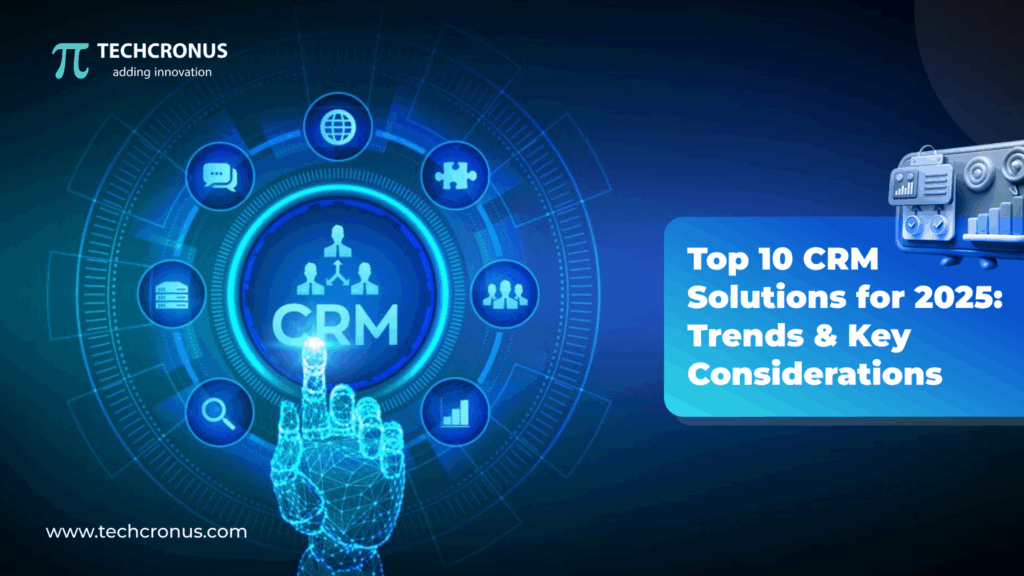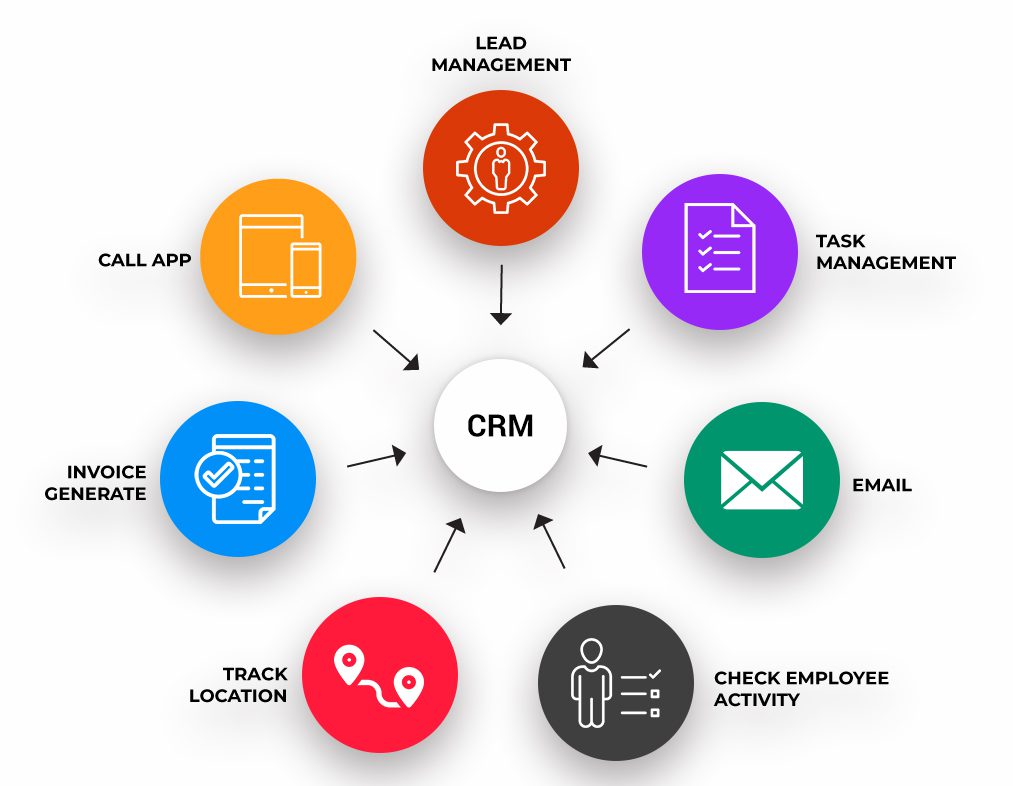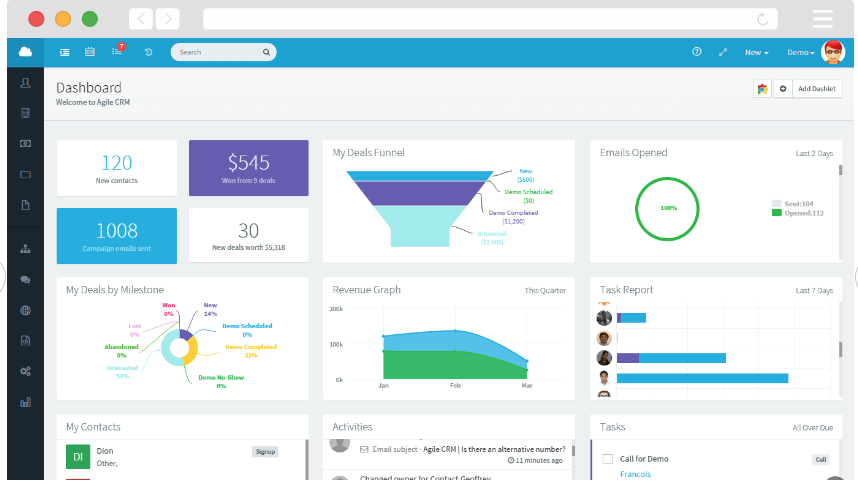
Small Business CRM Integration 2025: A Practical Guide to Boosting Growth and Efficiency
The year is 2025. Your small business is thriving, but the sheer volume of customer interactions, sales data, and marketing campaigns is becoming overwhelming. You know there’s a better way to manage everything – a way to streamline operations, understand your customers better, and ultimately, drive more revenue. The answer? CRM integration. This comprehensive guide will delve into the world of small business CRM integration in 2025, providing you with the knowledge and strategies you need to succeed.
What is CRM and Why Does Your Small Business Need It?
Before we dive into integration, let’s revisit the fundamentals. CRM, or Customer Relationship Management, is more than just software; it’s a strategy. It’s a holistic approach to managing all your company’s interactions and relationships with current and potential customers. A CRM system centralizes customer data, allowing you to track interactions, manage leads, automate tasks, and personalize your marketing efforts.
For a small business, a CRM system is a game-changer. It can help you:
- Improve Customer Relationships: By providing a 360-degree view of each customer, you can personalize interactions and build stronger relationships.
- Increase Sales: CRM helps you identify and nurture leads, track sales progress, and close deals more efficiently.
- Boost Efficiency: Automation features streamline repetitive tasks, freeing up your team to focus on more strategic initiatives.
- Enhance Marketing Effectiveness: CRM allows you to segment your audience, personalize your messaging, and track the performance of your marketing campaigns.
- Make Data-Driven Decisions: CRM provides valuable insights into customer behavior, sales trends, and marketing performance, enabling you to make informed decisions.
The Benefits of CRM Integration for Small Businesses in 2025
In 2025, the landscape of business is more competitive than ever. Integrating your CRM with other essential business tools is no longer a luxury; it’s a necessity. Here’s why:
1. Seamless Data Flow
Integration ensures that data flows seamlessly between your CRM and other systems, such as your accounting software, email marketing platform, e-commerce store, and social media channels. This eliminates data silos and manual data entry, saving you time and reducing the risk of errors.
2. Enhanced Automation
Integration allows you to automate more tasks than ever before. For example, when a new lead is added to your CRM, you can automatically trigger a welcome email, assign the lead to a sales representative, and update your marketing automation platform. This level of automation frees up your team to focus on more strategic initiatives.
3. Improved Customer Experience
By integrating your CRM with your customer service tools, you can provide a more seamless and personalized customer experience. Customer service representatives can access a complete history of each customer’s interactions, allowing them to resolve issues quickly and efficiently. This can be a powerful factor in customer retention.
4. Increased Sales Productivity
Integration streamlines the sales process, allowing your sales team to be more productive. Sales reps can access all the information they need in one place, eliminating the need to switch between multiple applications. They can also automate tasks such as lead assignment, follow-up emails, and quote generation.
5. Better Reporting and Analytics
Integration provides a more comprehensive view of your business performance. You can track key metrics, such as sales revenue, customer acquisition cost, and customer lifetime value, across all your integrated systems. This data can be used to identify areas for improvement and make data-driven decisions.
Key Integrations for Small Businesses in 2025
The specific integrations you need will depend on your business’s unique needs. However, some integrations are essential for most small businesses.
1. Accounting Software Integration
Integrating your CRM with your accounting software, such as QuickBooks or Xero, allows you to track invoices, payments, and other financial data directly within your CRM. This eliminates the need to manually enter data into both systems and provides a more complete view of your customer’s financial history. This is particularly important for a small business as it allows you to track revenue and profitability on a customer-by-customer basis. You can also automate tasks like sending invoices and tracking payments, saving you valuable time.
2. Email Marketing Platform Integration
Integrating your CRM with your email marketing platform, such as Mailchimp or Constant Contact, allows you to segment your email list based on customer data from your CRM. This allows you to send targeted email campaigns and personalize your messaging. You can also track the performance of your email campaigns within your CRM, allowing you to optimize your marketing efforts. Furthermore, you can automate the sending of welcome emails, nurture sequences, and other automated email campaigns based on customer behavior within your CRM.
3. E-commerce Platform Integration
If you have an e-commerce store, integrating your CRM with your e-commerce platform, such as Shopify or WooCommerce, is essential. This allows you to track customer purchases, view order history, and personalize your marketing efforts. You can also automate tasks such as abandoned cart emails and post-purchase follow-up emails. This integration can also help you with upselling and cross-selling opportunities by providing insights into customer purchase behavior.
4. Social Media Integration
Integrating your CRM with your social media channels, such as Facebook, Twitter, and LinkedIn, allows you to track customer interactions on social media. You can also use social media data to personalize your marketing efforts and identify potential leads. This integration can also help you monitor brand mentions and respond to customer inquiries on social media.
5. Customer Service Software Integration
Integrating your CRM with your customer service software, such as Zendesk or Salesforce Service Cloud, allows you to track customer support tickets and provide a more seamless customer experience. Customer service representatives can access a complete history of each customer’s interactions, allowing them to resolve issues quickly and efficiently. This integration can also help you identify common customer issues and improve your customer service processes.
6. Project Management Software Integration
For businesses that manage projects, integrating your CRM with your project management software, such as Asana or Monday.com, can be incredibly beneficial. This allows you to track project progress, manage tasks, and collaborate with your team directly within your CRM. You can also link customer records to specific projects, providing a complete view of your customer’s relationship with your business.
Choosing the Right CRM for Your Small Business in 2025
Choosing the right CRM is crucial for successful integration. Consider these factors when making your selection:
1. Your Business Needs
What are your specific business needs? Do you need a CRM that focuses on sales, marketing, or customer service? Do you need features such as lead management, sales automation, or email marketing integration? The right CRM will align with your business goals and address your pain points.
2. Scalability
Choose a CRM that can scale with your business. As your business grows, you’ll need a CRM that can handle increasing amounts of data and users. Look for a CRM that offers different pricing plans to suit your growing needs.
3. Ease of Use
The CRM should be easy to use and navigate. If your team struggles to use the CRM, they won’t use it, and you won’t reap the benefits of integration. Look for a CRM with a user-friendly interface and intuitive features.
4. Integration Capabilities
Ensure the CRM integrates with the other tools you use, such as your accounting software, email marketing platform, and e-commerce store. Check the CRM’s website or contact their support team to confirm its integration capabilities.
5. Pricing
Consider your budget when choosing a CRM. CRM pricing can vary widely, from free plans to enterprise-level solutions. Choose a CRM that offers a pricing plan that fits your budget and provides the features you need.
6. Customer Support
Choose a CRM provider that offers excellent customer support. You’ll likely need help with setup, training, and troubleshooting. Look for a CRM provider that offers multiple support channels, such as phone, email, and live chat.
Step-by-Step Guide to CRM Integration
Once you’ve chosen your CRM, follow these steps to integrate it with your other business tools:
1. Plan Your Integration Strategy
Before you begin, create a detailed integration plan. Identify the systems you want to integrate, the data you want to share, and the processes you want to automate. This will help you avoid problems during the integration process.
2. Choose Your Integration Method
There are several ways to integrate your CRM with other systems. You can use built-in integrations, third-party integration platforms, or custom integrations. The best method will depend on your technical expertise and the complexity of your integration needs.
3. Back Up Your Data
Before you begin the integration process, back up your data. This will protect your data in case something goes wrong during the integration process.
4. Configure the Integration
Follow the instructions provided by your CRM provider and the providers of the other systems you’re integrating. This may involve entering API keys, mapping data fields, and configuring automation rules.
5. Test Your Integration
After configuring the integration, test it thoroughly. Create test data and verify that it flows correctly between your systems. This will help you identify and fix any problems before they impact your business.
6. Train Your Team
Train your team on how to use the integrated systems. Provide them with documentation and support to ensure they can use the systems effectively.
7. Monitor and Optimize
After the integration is complete, monitor your systems to ensure they’re working correctly. Make adjustments as needed to optimize your processes and improve your results.
Advanced CRM Strategies for 2025
Beyond basic integration, several advanced strategies can help you maximize the value of your CRM in 2025:
1. Artificial Intelligence (AI) and Machine Learning (ML)
In 2025, AI and ML are becoming increasingly integrated into CRM systems. These technologies can be used to automate tasks, personalize customer experiences, and provide deeper insights into customer behavior. For example, AI can be used to predict customer churn, recommend products, and automate customer service interactions. Machine learning algorithms can analyze your customer data to identify patterns and trends, helping you make better decisions.
2. Customer Data Platforms (CDPs)
CDPs are becoming increasingly popular as a way to centralize customer data from multiple sources. A CDP collects, unifies, and stores customer data, providing a 360-degree view of each customer. This data can then be used to personalize marketing campaigns, improve customer service, and drive sales. CDPs can be integrated with your CRM to provide a more comprehensive view of your customer data.
3. Mobile CRM
Mobile CRM allows your sales team to access customer data and manage their sales activities from anywhere. This is especially important in 2025, as more businesses are adopting remote work models. Mobile CRM apps provide features such as contact management, lead tracking, and sales reporting, allowing your team to stay productive on the go.
4. Voice Assistants
Voice assistants, such as Alexa and Google Assistant, are becoming increasingly integrated with CRM systems. This allows sales reps to access customer data, update records, and schedule appointments using voice commands. This can save time and improve efficiency.
5. Hyper-Personalization
In 2025, customers expect highly personalized experiences. CRM systems can be used to personalize every aspect of the customer journey, from marketing messages to product recommendations. This requires a deep understanding of customer data and the ability to leverage AI and ML to deliver personalized experiences at scale.
Overcoming Challenges in CRM Integration
While CRM integration offers significant benefits, it can also present some challenges:
1. Data Migration
Migrating data from your existing systems to your new CRM can be a complex and time-consuming process. It’s essential to plan your data migration carefully and ensure that your data is accurate and complete. Clean and well-organized data is vital for successful CRM implementation.
2. Integration Complexity
Integrating multiple systems can be complex, especially if you have a large number of systems or if your systems are not designed to integrate easily. Consider using a third-party integration platform or working with a CRM consultant to simplify the process.
3. User Adoption
Getting your team to adopt the new CRM system can be a challenge. Provide training and support to ensure your team understands how to use the system and how it can benefit them. Make sure the CRM is user-friendly and intuitive.
4. Security and Privacy
Protecting customer data is essential. Ensure your CRM system has robust security features and complies with all relevant data privacy regulations. Regularly review your security measures and update them as needed.
5. Cost
CRM implementation and integration can be expensive. Factor in the cost of the CRM software, integration services, and training. Choose a CRM that fits your budget and provides the features you need.
The Future of CRM Integration: Predictions for 2025 and Beyond
The future of CRM integration is bright. Here are some predictions for 2025 and beyond:
1. Increased Automation
Automation will continue to play a significant role in CRM. Expect to see more AI-powered automation features, such as automated lead scoring, automated email marketing, and automated customer service interactions.
2. Greater Personalization
Customers will expect even more personalized experiences. CRM systems will leverage AI and ML to deliver highly personalized marketing messages, product recommendations, and customer service interactions.
3. More Seamless Integrations
CRM systems will become more tightly integrated with other business tools, such as accounting software, e-commerce platforms, and social media channels. This will provide a more seamless and unified view of your customer data.
4. Rise of the CDP
Customer Data Platforms (CDPs) will become increasingly popular as a way to centralize customer data from multiple sources. CDPs will provide a 360-degree view of each customer, enabling businesses to personalize their marketing efforts and improve customer service.
5. Focus on Data Privacy
Data privacy will continue to be a major concern. CRM systems will need to comply with all relevant data privacy regulations and provide robust security features to protect customer data.
Conclusion: Embrace CRM Integration for Small Business Success
CRM integration is no longer optional for small businesses; it’s essential for success in 2025 and beyond. By integrating your CRM with other essential business tools, you can streamline operations, improve customer relationships, increase sales, and make data-driven decisions. Choose the right CRM, plan your integration strategy carefully, and train your team to ensure a successful implementation. Embrace the power of CRM integration, and watch your small business thrive.


